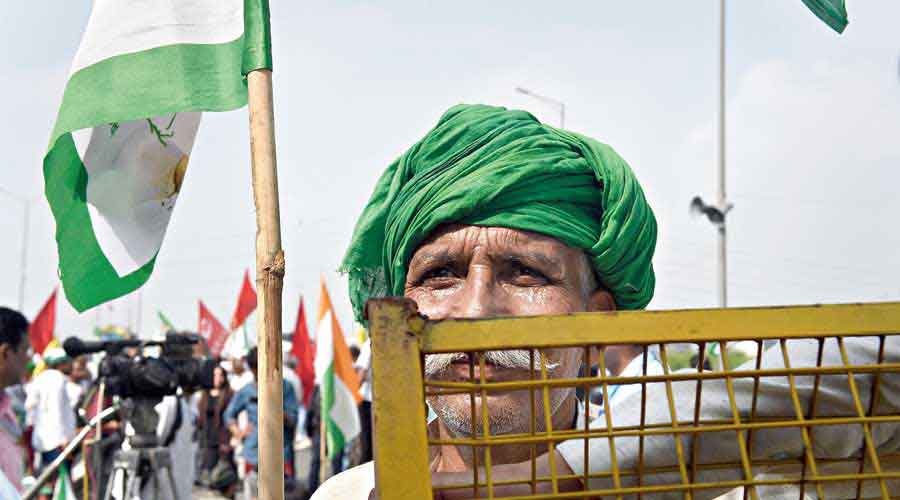A socio-economic and constitutional imperative would confront the Centre whenever it meets the farmers over their demand for the legalization of the Swaminathan Commission’s formula for minimum support price. Despite the repealing of the farm laws, neoliberal hawks cannot stop gushing about the case for free-market industrialization of Indian agriculture as a panacea for its ills. Surely they know that the experiment has failed elsewhere and that it would meet the same fate in India.
While it is true that public procurement of paddy and wheat has hit their thresholds and farmers should be incentivized to diversify their crops to cereals, nuts and oilseeds for nutritional and environmental reasons, to argue that the private sector should sweep in without government price-stabilization is to throw the baby out with the bathwater. Market forces will not feed the poor because they don’t have to face polls.
Under the current MSP calculation formula, ‘A2+FL’, the government refuses to compensate the farmer for self-owned land. Besides being unconscionable, this belies elementary accounting. In states where farm land is pricier, the difference between A2+FL and Swaminathan’s C2 formula can be as staggering as 80-90 per cent. Similarly, in the southern states, where labour is generally more expensive, A2 is not sufficiently compensatory for the cost of cultivation.
The case for MSP legalization ought to be scrutinized under the socio-economic conditions of contemporary India. In the last decade, poverty in absolute terms has increased for the first time since its estimation began. Despite nutritional advances made through the Poshan Abhiyaan, the National Food Security Act and the mid-day meal, India is home to a third of the world’s wasted or stunted children. Our constitutional scheme is such that those at the bottom of the pyramid have the first right over the resources of the nation and the political economy has no choice but to honour that commitment. In doing so, India would do nothing unique. Governments the world over are compelled to support farmers and the poor with subsidies and direct cash transfers. In the United States of America, the federal government spent over $150 billion in 2021 in the form of nutrition assistance programmes.
India’s road to substantive agrarian reforms is long and arduous, but in the interim, to soften the current impasse with its largest political constituent — the farmers — the government should guarantee by statute, for a minimum period of 10-20 years, that crops such as nuts, pulses and oilseeds would be procured using the Swaminathan formula; amend the NFSA to include such crops as scheduled entitlement for targeted households at a subsidized rate; devolve greater procurement powers to states for localized procurement of dairy, poultry and horticulture products to strengthen the nutritional output of MDM and anganwadi systems; give independence and statutory teeth to the Commission for Agricultural Costs & Prices with the mandate to implement a dynamic crop incentivization pricing based on the government’s long-term procurement goals; mandate that non-governmental bulk purchase of listed crops beyond a certain threshold cannot be below MSP.
The rationale for legislation-based price stabilization arises from the moral necessity to prevent exploitation. In our constitutional scheme, such rights are enshrined as rights to life and equality and prohibit forced labour. In its traditional contours, force would imply bondage or slavery, but its contemporary interpretation should remain alert to the fact that without legislative-based price stabilization, economic compulsions can compel the sale of farm produce at rates that would be tantamount to ‘forced labour’. No government, least of all one with such monumental political weight as this one, should let that happen. No doubt, it would require heavy-lifting on multiple fronts: agricultural commodities have a global marketplace so price stabilization within national borders means rising trade-barriers. We have a precedent of such protectionism in money markets. The Indian rupee is not fully convertible and the Reserve Bank of India efficiently guards it for precisely that reason: to protect Indian industry and currency. Such protection should be extended to the agricultural economy.
(Kabeer Shrivastava is an advocate)










